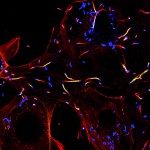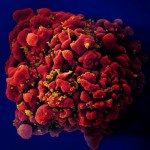Lien vers Pubmed [PMID] – 21173107
J. Exp. Med. 2011 Jan;208(1):125-34
The programmed development of lymph nodes and Peyer’s patches during ontogeny requires lymphoid tissue inducer (LTi) cells that express the nuclear hormone receptor RORγt. After birth, LTi cells in the intestine cluster into cryptopatches, the precursors of isolated lymphoid follicles (ILFs), which are induced to form by symbiotic bacteria and maintain intestinal homeostasis. We show that in RORγt-deficient mice, which lack LTi cells, programmed lymphoid tissues, ILFs, and Th17 cells, bacterial containment requires the generation of large numbers of tertiary lymphoid tissues (tLTs) through the activity of B cells. However, upon epithelial damage, these mice develop severe intestinal inflammation characterized by extensive recruitment of neutrophils and IgG(+) B cells, high expression of activation-induced deaminase in tLTs, and wasting disease. The pathology was prevented by antibiotic treatment or inhibition of lymphoid tissue formation and was significantly decreased by treatment with intravenous immunoglobulin G (IVIG). Our data show that intestinal immunodeficiency, such as an absence in RORγt-mediated proinflammatory immunity, can be compensated by increased lymphoid tissue genesis. However, this comes at a high cost for the host and can lead to a deregulated B cell response and aggravated inflammatory pathology.



